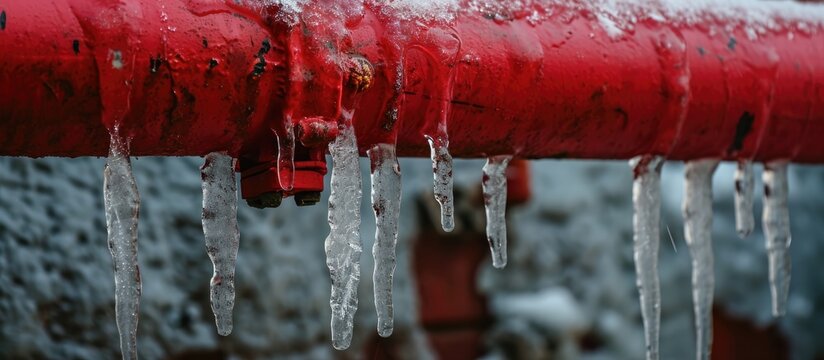Tips to Maintain Your Pipes from Freezing Damage: Important Tips
Tips to Maintain Your Pipes from Freezing Damage: Important Tips
Blog Article
The article listed below relating to Prevent Frozen Pipes is incredibly remarkable. Don't overlook it.

Winter can wreak havoc on your pipes, especially by freezing pipes. Right here's just how to stop it from occurring and what to do if it does.
Intro
As temperatures drop, the risk of frozen pipelines increases, possibly resulting in pricey repairs and water damages. Comprehending just how to prevent icy pipes is essential for home owners in cold climates.
Recognizing Frozen Pipes
What triggers pipes to ice up?
Pipelines freeze when exposed to temperatures below 32 ° F (0 ° C) for prolonged durations. As water inside the pipelines ices up, it increases, taxing the pipeline wall surfaces and possibly causing them to burst.
Risks and damages
Icy pipelines can lead to water interruptions, home damages, and costly fixings. Burst pipelines can flooding homes and trigger considerable structural damage.
Indicators of Frozen Pipes
Determining frozen pipes early can stop them from rupturing.
How to determine icy pipes
Seek decreased water circulation from taps, unusual odors or sounds from pipelines, and visible frost on subjected pipelines.
Avoidance Tips
Insulating susceptible pipelines
Cover pipes in insulation sleeves or utilize warmth tape to safeguard them from freezing temperatures. Concentrate on pipelines in unheated or external locations of the home.
Home heating strategies
Maintain indoor rooms adequately heated, especially areas with pipes. Open up closet doors to permit cozy air to flow around pipes under sinks.
Shielding Outdoor Pipes
Garden pipes and outdoor taps
Separate and drain garden pipes before winter. Mount frost-proof spigots or cover outdoor faucets with shielded caps.
What to Do If Your Pipelines Freeze
Immediate actions to take
If you presume icy pipes, maintain faucets available to soothe pressure as the ice thaws. Utilize a hairdryer or towels soaked in hot water to thaw pipelines gradually.
Long-Term Solutions
Structural modifications
Take into consideration rerouting pipes away from outside wall surfaces or unheated locations. Include extra insulation to attics, cellars, and crawl spaces.
Upgrading insulation
Buy top notch insulation for pipelines, attics, and walls. Proper insulation helps maintain regular temperature levels and minimizes the risk of icy pipes.
Conclusion
Preventing icy pipes calls for positive steps and fast reactions. By understanding the reasons, indications, and safety nets, property owners can shield their plumbing throughout winter.
5 Ways to Prevent Frozen Pipes
Drain Outdoor Faucets and Disconnect Hoses
First, close the shut-off valve that controls the flow of water in the pipe to your outdoor faucet. Then, head outside to disconnect and drain your hose and open the outdoor faucet to allow the water to completely drain out of the line. Turn off the faucet when done. Finally, head back to the shut-off valve and drain the remaining water inside the pipe into a bucket or container. Additionally, if you have a home irrigation system, you should consider hiring an expert to clear the system of water each year.
Insulate Pipes
One of the best and most cost-effective methods for preventing frozen water pipes is to wrap your pipes with insulation. This is especially important for areas in your home that aren’t exposed to heat, such as an attic. We suggest using foam sleeves, which can typically be found at your local hardware store.
Keep Heat Running at 65
Your pipes are located inside your walls, and the temperature there is much colder than the rest of the house. To prevent your pipes from freezing, The Insurance Information Institute suggests that you keep your home heated to at least 65 degrees, even when traveling. You may want to invest in smart devices that can keep an eye on the temperature in your home while you’re away.
Leave Water Dripping
Moving water — even a small trickle — can prevent ice from forming inside your pipes. When freezing temps are imminent, start a drip of water from all faucets that serve exposed pipes. Leaving a few faucets running will also help relieve pressure inside the pipes and help prevent a rupture if the water inside freezes.
Open Cupboard Doors
Warm your kitchen and bathroom pipes by opening cupboards and vanities. You should also leave your interior doors ajar to help warm air circulate evenly throughout your home.

We had been introduced to that report on How To Avoid Freezing Pipes from an acquaintance on another web property. Sharing is nice. Helping people is fun. We enjoy reading our article about Helpful Tips to Prevent Frozen Pipes this Winter.
Appointment Report this page